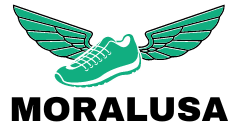How to tell if Shoes are Non-Slip?
A slip-resistant shoe will save you from visiting the hospital unnecessarily. Why is this true? Well, according to government sources slips, trips, and falls account for 15 percent of all accidental deaths and over 20 percent of all disabling injuries at the workplace. If you do not want to be part of the statistics, now is a good time to start wearing non-slip shoes to work. As you begin your search for these shoes, you may be pondering how to tell if a shoe is slip-resistant. This post will give you some helpful tips.
Easy Ways to Recognise Slip-resistant Shoes
What exactly are Non-slip Shoes?
While most individuals consider any pair of sneakers with rubber soles to be slip-resistant shoes, to be regarded as non-slip, shoes must meet specific safety parameters and slip-resistant benchmarks. The best slip-resistant shoes often look like any other shoe. Nevertheless, these shoes have been carefully constructed using distinctive materials as well as tread patterns. Slip-resistant shoes help decrease slips, trips, and falls. The outsoles of these shoes provide fantastic non-slip traction that will help you remain on your feet when walking on greasy, wet, and slippery surfaces.
See also: Best Slip-on Shoes for Nurses
How can you tell if a shoe is non-slip?
Below are a few tips on how to ascertain if you are purchasing non-slip shoes
Check the labels:
When you are in the market for shoes, you may observe that several brands tag their shoes as slip-resistant or non-slip on the packaging. Checking the labels is a great place to start even though it is not a guarantee that the shoe you are considering will provide enhanced traction on wet/slippery surfaces. If you are shopping over the internet, you could go through the description. Nevertheless do not completely believe everything the product description says because most manufacturers tend to hype their products.
For this reason, when the shoes arrive, check to see if they are truly slip-resistant. You can return the product and ask for a refund if you discover the shoes are not non-slip even though it was indicated on the packing or product description.
Examine the outsole’s shape:
After establishing that the footwear is labeled as non-slip, the next thing you need to do is to inspect the soles. Go for shoes with slightly rounded soles as opposed to the ones with flat outsoles. The concept is that shoes with rounded outsoles are better at allowing liquids like water and oil to escape from beneath the shoe compared to ones with flat edges. Therefore, if you opt for shoes with flat edges, they will keep liquids trapped beneath your shoes and that might cause you to slip and fall on wet/slippery surfaces.
Look at the tread pattern:
The tread pattern of a shoe is a critical attribute concerning slip resistance. You will typically see small circles, hexagons, or squiggles on the underside of the outsole. These make up the tread patterns and they are designed to provide you with dependable traction to help you surmount challenging surfaces and terrains. Generally, the greater the treads, the greater the traction the shoes will provide.
As you use your non-slip shoes, you should keep an eye on the treading. The pattern will wear away with time, reducing its effectiveness at averting falls. Once you notice that the grooves are beginning to wear away to less than 3 millimeters depth, it may be time to replace the shoes.
See also: How Often Should You Replace Work Shoes?
Feel the Underside:
When selecting a non-slip shoe, it is always best to go for ones with rubbery soles. Rubber soles are known to provide better traction on sleek surfaces compared to hard and rigid soles. Besides, rigid soles will collect water beneath the shoes, which greatly diminishes their ability to provide a solid grip on the ground. This will increase your risk of slips and falls.
Try out the shoes:
Be sure to try out the shoes you have opted to buy. Walk around wearing the shoes to check them for slip resistance. Try them on shiny flooring like marble and tiles that can be slippery. Do your feet slide and slip as you walk around on these surfaces? Your observations should give you an idea of whether the shoes are slip-resistant or not.
See also: Best Shoes For Nurses On Feet All Day
Non-slip shoes are vital for individuals who work mostly on their feet particularly on slippery surfaces. Nevertheless, it may take a little searching to find the perfect non-slip shoe for you.
